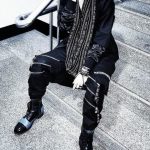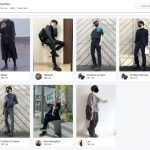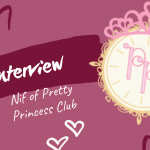Building a Shopgirl Wardrobe

For those who are unfamiliar, the term “shopgirl” refers to someone who works as a salesperson for a brand in a physical store—in this case, a Japanese fashion brand or reseller. For many, becoming a shopgirl is a dream job.
Now, I know not all shop staff are girls, but for the purpose and simplicity of this article I’ll just be using the term “shopgirl” and “she/her” as general descriptors.
What’s the most important thing in a shopgirl’s arsenal? Her wardrobe, of course! When it comes to clothing and working in J-fashion on the daily, a shopgirl has very specific needs for her wardrobe. In general, things need to be effortlessly cohesive, comfortable, and easy to move around in on the shop floor.
In my recent experience working with my employees at Kuroshiro Kawaii, I’ve been able to experience some of the wardrobe prep that comes with being hired as a shopgirl.
The Function of Clothing as a Salesperson
When a customer enters the store, you are the first person they’ll make a connection with. And your clothing is one of the first things they’ll actually notice—even before the items on the shelves. Even before the store, there’s social media—you, as a shopgirl, are the face of the company, and can sometimes be the determining factor for whether someone stops in to say hello or not.
Humans are wired to recognize humans, especially in strange situations. When you enter a new space, you might see the store, but the first thing that you connect with is the employee. Becoming a shopgirl is a huge honor amongst the J-fashion community, primarily because you are entrusted to be the face of the store. So how do you transition your wardrobe to one of a casual J-fashion wearer to that of a shopgirl?

Shopping Tips
You Need More Than You Think
It’s never been more true that buying clothing for work is an investment. While quality over quantity still applies from normal closets, keep in mind that shopgirls wear J-fashion every day, possibly from very specific brands.
Let’s think about this for a minute. If you went to work at a store that only had one brand (Angelic Pretty, for example), would you be able to coordinate enough outfits wearing only Angelic Pretty to work every day without repeating an outfit too many times?
No matter how much you love AP, the answer is probably no—even if half your lolita wardrobe is AP.
In Kuroshiro Kawaii, we have a rule to help our employees make the most of their closets: as long as they’re wearing J-fashion with at least one piece from any brand we carry, they can wear what they want. This includes indie brands that we have in stock that month. But you know what? Even with this lax dress code, our employees quickly found that, while they loved the clothes they had, their closets were not nearly as big as they thought—and not even close to how large it had to be.
So, it’s time to go shopping then, right? Yes!
But before you go on a shopping rampage, you need to make sure you put real thought into the pieces you buy. Building this larger closet is still not just about quantity and bulk buying. You’ll need to buy durable, high-quality, and versatile pieces that go well with just about everything—along with a few more complex pieces.

Puvithel Crystal Heart Necklaces | Provided by Kuroshiro Kawaii
Don’t Diss the Basics
The first thing I noticed about our employees was that their wardrobes transitioned to more casual looks, and more basics. While everyone loves a fancy dress, it’s just not practical to wear OTT, or a dress that’s tight, at work. Plus, if you’re sweeping, mopping, and taking out the trash, OTT is the last thing you want.
Investing in durable basics is one of the most important things you can do when you start looking for new items. Look for lightweight cotton blouses that can be easily washed, and simple dresses that are comfortable and can be dressed up or down. If you find a blouse that works well for you at work, don’t be afraid to buy multiple colors. The same goes for shoes!
A fantastic cut and dress that we’ve found for this purpose is Enchantlic Enchantilly’s primary JSK cut (like this one pictured below). It’s super stretchy, comfortable, and light enough that it doesn’t even feel like you’re wearing lolita! Combined with the type of printed polyester that makes up this dress, it’s super easy to clean if you have an accident–which happened to my girlfriend when she bumped up against a dirty car in the pouring rain and ended up with mud in her skirt. She took a wet towel and scrubbed it lightly, and it was ready to be worn immediately! These kinds of dresses are invaluable in a shopgirl’s wardrobe.
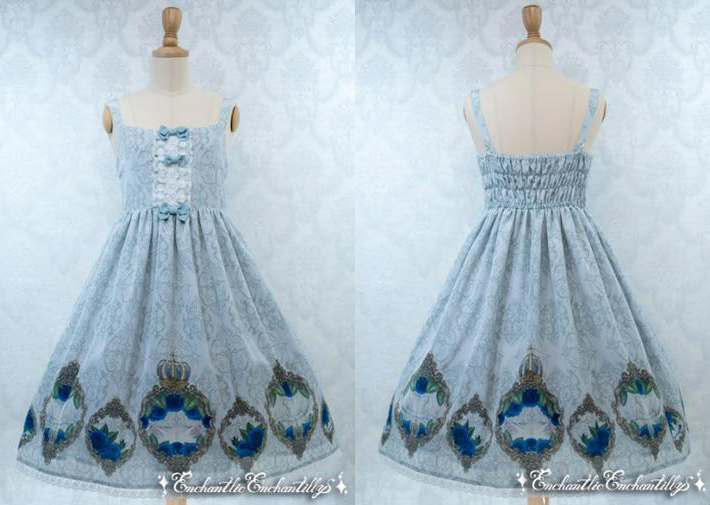
Enchantlic Enchantilly’s Hide and Seek in the Rose Garden JSK
This leads me to….
Buy Things You Can Easily Wash!
There’s nothing worse than coming home after a long week of work and using one of your entire days off to do brand laundry. It’s bad enough as it is to wash dresses, and you don’t want to be overwashing your expensive dresses either. So, keep this in mind when you shop. How often do you wash your dresses, and how do your dresses react to being washed? You might invest in a few more solid color pieces or pieces without embellishments, and rely on accessories to change things up. Or, if you (and your dresses) are used to being washed regularly, this might not even be an issue for you.
The main thing is: make sure your wardrobe is prepared to be washed more often than usual. Shop days aren’t exactly as glamorous as shopgirls make them out to be!
Comfort and Versatility are Essential
When you shop, keep versatility in mind. You want to be able to have a wardrobe that is effortlessly versatile so that you don’t have to put endless thought into your coords each and every day. Think about what themes, styles, and motifs your closet has in common, and buy accessories with those themes and colors. Eventually, if you have a closet so cohesive, you won’t even have to think about your coordinate much when you’re running late the 2nd day in a row.
When it comes to blouses, for example, thinking like an ouji makes a lot of sense. There aren’t many blouse silhouettes that complement an ouji’s wardrobe nicely, so I am personally stuck with high neck or tie-collar blouses like these two below (offbrand). Of course, a normal men’s style button-down collar is always a good option.
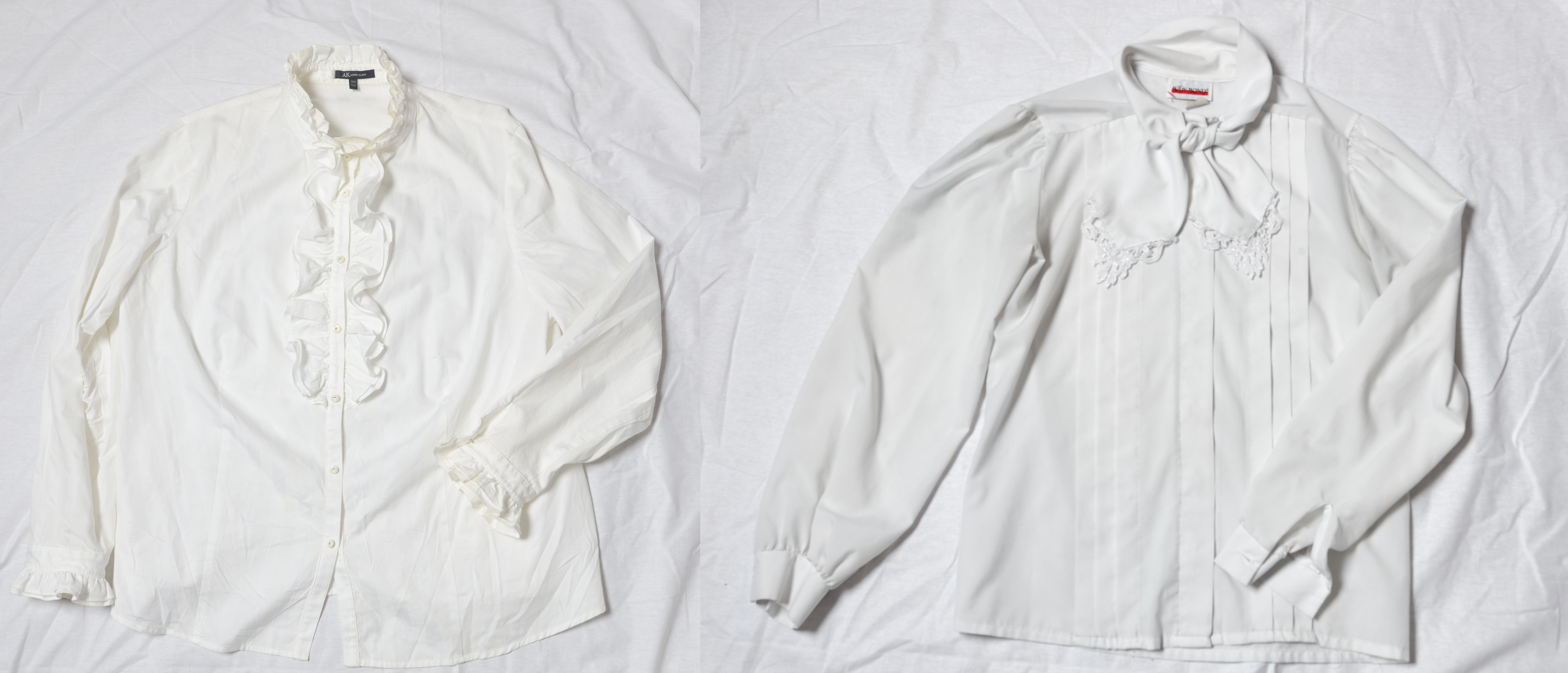
These three collar types are really the only ones I can have in my closet, which would make things rather easy if I wore lolita. These collars would really only go with certain JSK collar cuts, etc. So, if you took note of the specific collar types that went well with all of your dresses and found a common thread there, it might be a good idea to buy a bunch of basic blouses with that specific collar type so any one blouse can go with any dress. Make sense?
As for comfort, wearing tight dresses or OTT just isn’t practical, and it’s best to have a few workhorse dresses like Enchantlic Enchantilly’s Hide and Seek in the Rose Garden JSK or sack dress cuts in your closet.
Look Secondhand First
There’s a lot to be said for brand hunting secondhand (or loliable hunting at Goodwill). Many of these blouses, dresses, shoes, and accessories that you will be able to find secondhand have been through the ringer already and can already be a bit worn. If you can find a few of these pre-owned staple pieces (such as the blouses I mentioned above) they will not only be cheaper to stock up on, but easier to wash since you won’t be worried about pilling or damages if it’s already a bit damaged. That said, it’s always good to look crisp at work with damage-free clothing, but if you find that you need to wash your brand super often you might consider avoiding buying new basics if you can help it. This will help you avoid wearing down your new purchases too quickly, and help your dollar stretch just a bit further.

Images provided by Kuroshiro Kawaii
The 3-Dress Rule
When buying accessories and shoes, keep the 3-Dress Rule in mind. This is a rule that one of my shopgirls has that keeps her from buying things on a whim, and it really helps the cohesiveness of her closet.
The rule is, simply: Don’t buy accessories or shoes unless it will go with at least three dresses you already own.
Now, that’s not to say that you can’t buy main pieces. On the contrary! This is a chance for you to add new colors into your closet and have a little fun. If you wear the same thing every day, you will get bored and eventually resent your closet. And no one wants that. Bringing in a few main pieces will help you grow your wardrobe considerably when combined with the 3-Dress Rule. And suddenly you have a wardrobe that is much more reasonable to wear day to day.
Don’t Forget Makeup
Wearing J-fashion is one thing, but don’t forget the makeup. Makeup goes a long way to help you look fresh-faced all day. And, in the case of visual kei, is essential to the style. Make sure that you have good-quality makeup that works with your skin type and is tried and true. Try to keep your makeup routine as simple as possible so you don’t have to spend 3+ hours prepping every day. Plus, with a quick foundation routine, that leaves extra time for tailoring your overall look to your coordinate! This will really help bring cohesiveness to your coordinate as well as preventing you from becoming bored with the same makeup routine day after day.

Enchantlic Enchantilly, Puvithel, and Kaneko | Images provided by Kuroshiro Kawaii
Invest in Quality Underthings
Any petti will take a beating if worn every day, and if you stick with those 7 layered lower-quality petticoats you’ve been wearing, before long you’ll be as flat as a pancake and in pain from all those waistbands. Consider a high-quality petticoat from Ronova or MeLikesTea—and one that fits. Get it made custom if necessary, and without built-in bloomers (buy these separately so they’re easier to wash!).
This next suggestion might sound a little insane, but bear with me: consider corsetry as an option.
Corsets, when laced properly, smooth things down, help maintain posture, and provide back support. This can help you stay comfortable and looking fresh all day (and prevent back pain when you get home).
Contrary to popular belief, corsets are not dangerous. They’re not necessarily meant to be pulled in tightly (tightlaced) and reduce size or squish internal organs. Some people wear corsets for these reasons, but generally (and historically) they’re simply meant for posture and back support and to maintain a fashionable shape underneath clothing. Also, corsets aren’t just for women. I have even been known to wear a corset when I’m working at Kuroshiro Kawaii. Personally, I have terrible back pain at the end of the day if I don’t. Even historically, both men and women used corsets for many reasons–some fashion, some function, and nearly always a mixture of the two.
If corsets aren’t for you, shapewear can also be an option if you’re looking to smooth things or prevent your waistband from rolling down or bunching awkwardly–same as a corset (though a bit less effective).
I know this post has honestly gone on on a bit too long, but I do hope it helped you find a starting point in your new shopgirl wardrobe (or helped you think about your wardrobe in a new way!). These same tips can also apply to those of us who are looking to transition their wardrobe from occasional wear to daily wear.
Kal from Lightningsavage Photography specializes in creative portrait photography for J-Fashion enthusiasts and more. He has served as the J-Fashion event photographer for Oni-Con 2016–2020, as well as fashion shows, meetups, and personal shoots. He is also a co-owner of Kuroshiro Kawaii. You can follow him on Instagram at @lightningsavage_photography and @kaldec_
He is currently into visual kei and EGA fashions.




